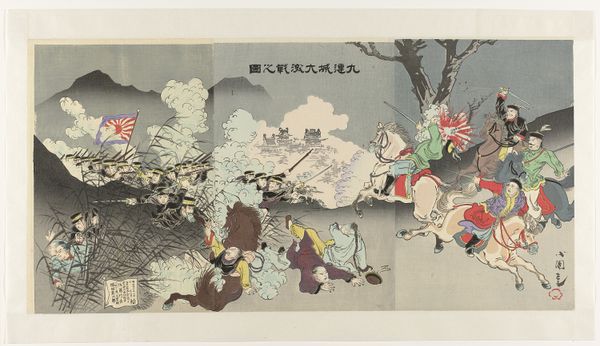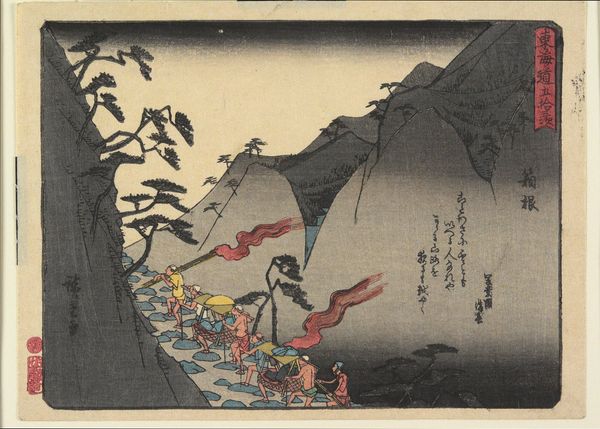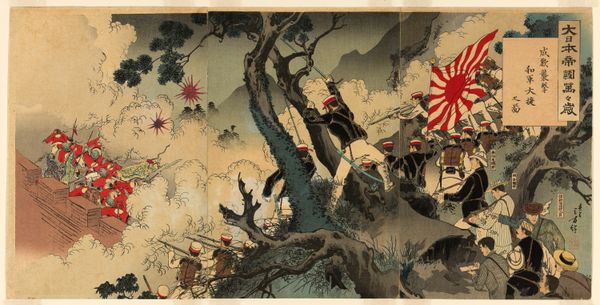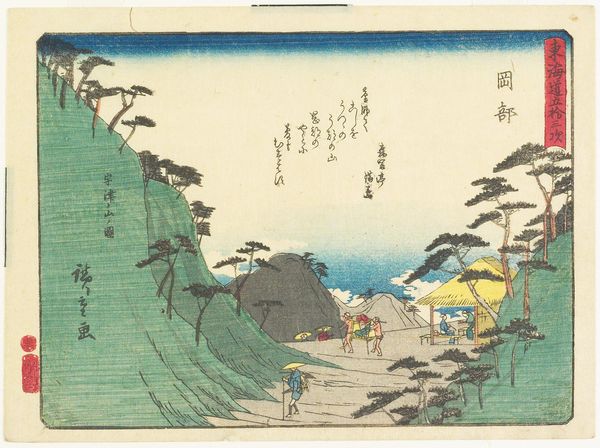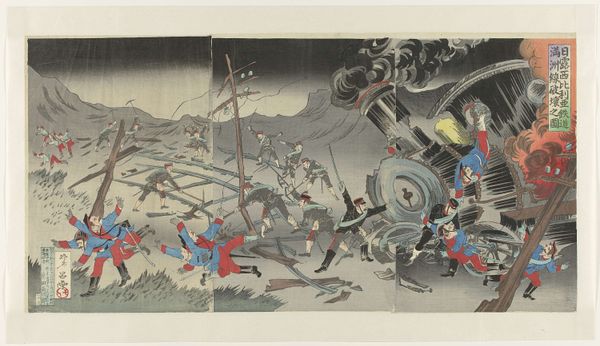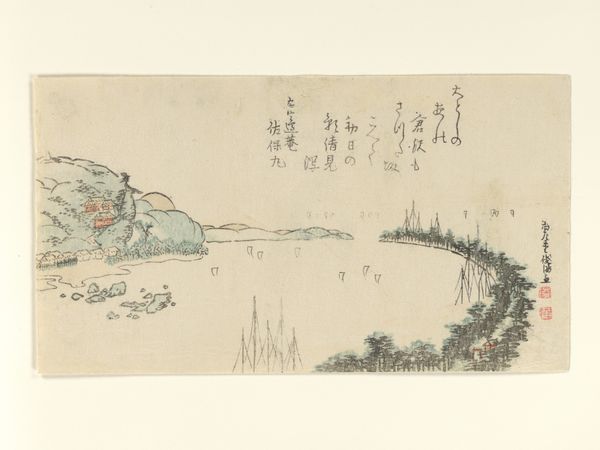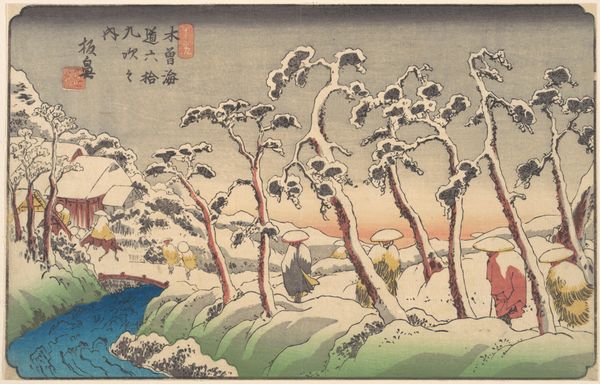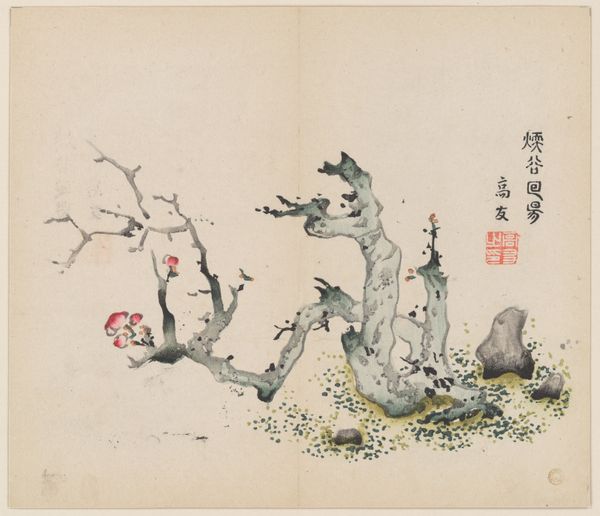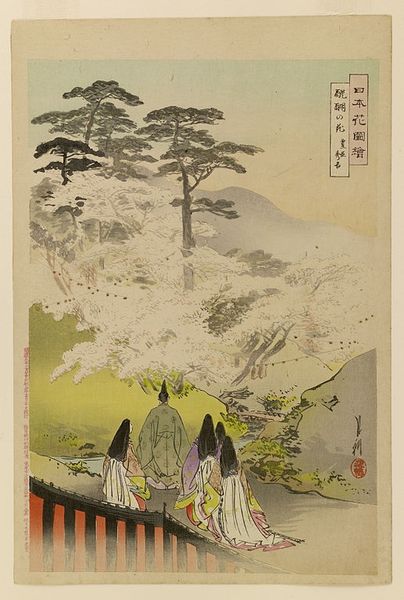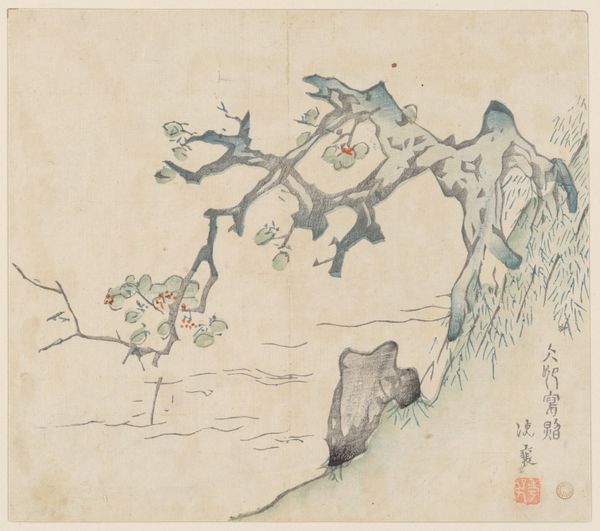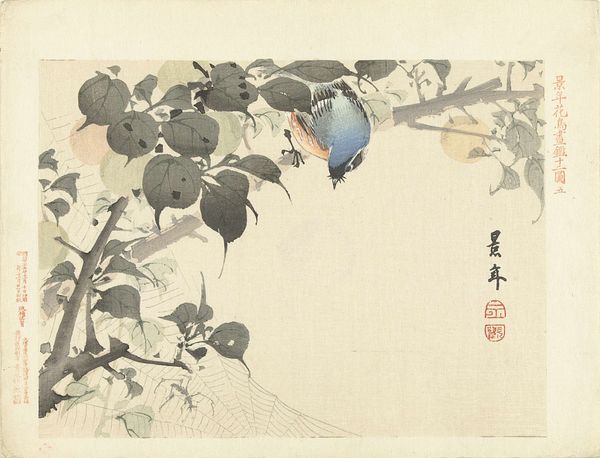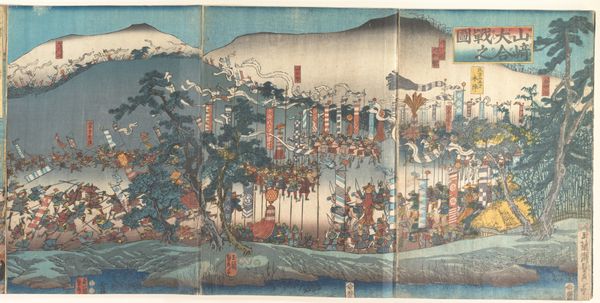
Ons leger wint een grote overwinning bij Pyongyang in Korea, met overgave van het dorp - Een deel van de derde divisie valt Pyongyang aan 1894
0:00
0:00
Dimensions: height 364 mm, width 712 mm
Copyright: Rijks Museum: Open Domain
Curator: This triptych woodblock print from 1894 by Utagawa Kokunimasa depicts the Japanese army's victory at Pyongyang during the First Sino-Japanese War. It’s titled "Ons leger wint een grote overwinning bij Pyongyang in Korea, met overgave van het dorp - Een deel van de derde divisie valt Pyongyang aan," and is currently held in the Rijksmuseum. Editor: My immediate impression is that the composition is quite dynamic, albeit in a somewhat theatrical way. The spatial depth created through linear perspective and overlapping forms is really compelling; it’s as if Kokunimasa is trying to compress multiple battlefronts into a single frame. Curator: Indeed. The scene reflects Japan's imperial ambitions and its burgeoning military prowess during a period of intense nationalism and colonial expansion. Prints like these played a significant role in shaping public perception of the war effort. They celebrated military victories and promoted patriotic fervor, becoming instruments of state propaganda. Editor: I see how it functions as a persuasive narrative. I’m especially struck by the use of line—the artist renders texture in uniforms, movement in terrain, and uses subtle gradations to build a vivid scene of modern warfare, not idealized like classic paintings on war, but dynamic and contemporary. The strategic deployment of colors also commands my attention—how they are placed as much as the hue themselves. Curator: Let's not overlook the absence of Korean perspectives or narratives. The print predominantly spotlights Japanese heroism, reinforcing an us-versus-them mentality which can have a long lasting social, political, and ethical ramifications when immortalized through media. Editor: That's true; however, visually, this artistic Japonisme evokes something of a Japanese epic: scenes read as framed stage settings. Consider the diagonals thrusting into deep space, almost daring the viewer to be anything less than impressed. It successfully pulls us into an engagement that makes it difficult to just passively observe it. Curator: It's essential to deconstruct such heroic portrayals, particularly within the context of colonial histories. By examining whose stories are centered and whose are marginalized, we expose how such works propagate power imbalances. Editor: A final thought—the organization of each scene, while quite detailed and active, has this cohesive balance: it has unity with variety, and each distinct action seems not divorced but integral to the others. The success is in that the many never obscure the one, and conversely, that the one is a vehicle to behold the many. Curator: Absolutely. Examining the artwork encourages us to reckon with uncomfortable aspects of our shared past.
Comments
No comments
Be the first to comment and join the conversation on the ultimate creative platform.
